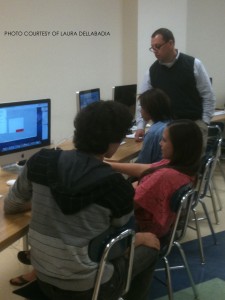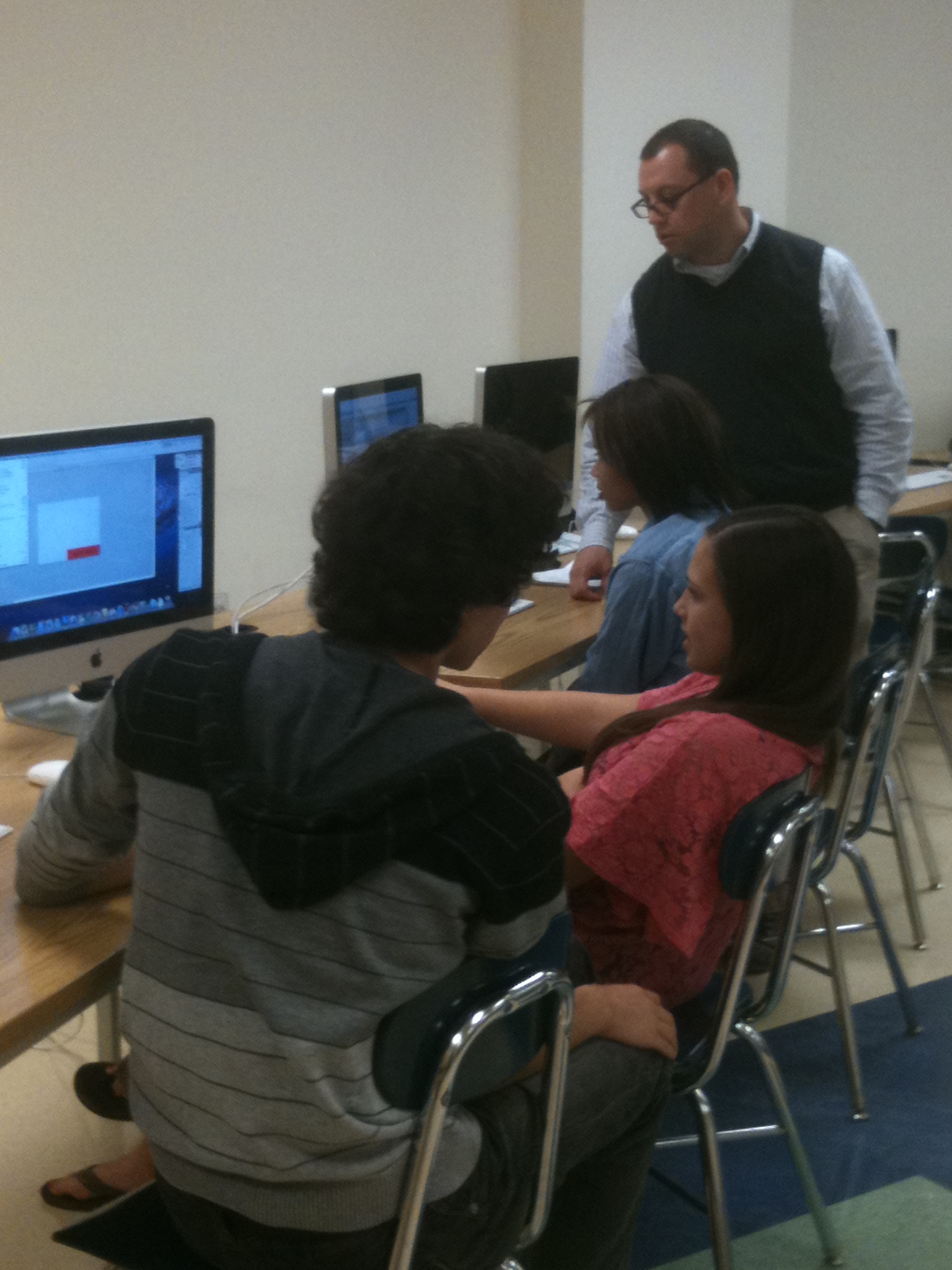
For the past few weeks, students passed by flyers advertising “Leesville’s Got Talent” throughout the school. “Leesville’s Got Talent” happens to be one of four segments being produced by the students of Digital Media 2.
Digital Media is relatively new to the state as a whole. The class had not been offered at Leesville until the fall of 2011 under Mr. Korrick. Digital Media 2 then developed based on the students who wanted to increase their knowledge and skills in digital media.
Students of the class focus on web design, video production, graphic design, animation and audio production. “The primary work we do in advanced digital is produce Pride TV and other community projects for the school,” said Korrick.
Students are currently working on several different segments that will air during Pride Period. “So crank it up!” said Chelsea Lee, who is the current director of the segment “Leesville’s Got Talent.”
Pride TV had been created with the idea of doing more than airing the morning announcements as most high schools do in the area. “It is intended to showcase different things in the school, different people in the school,” said Lee.
Lee’s segment emphasizes random students who have a special talent and want the entire school to see it. p“I think everybody and anybody is interesting, but I feel like the different somebody who’s not the norm, somebody that’s strange [would be better for airing on my segment],” said Lee.
One segment titled “Burning Questions” focuses on asking students important questions that might not be known unless otherwise tested. “Looking Ahead” has the students interviewing football players or chorus students on what they plan on doing in the future. The fourth segment, directed by Alan Bishel, has students showing the crew what they do in order to support their pride of the school.
For the segments to be produced, the digital media students have a process they must abide by. “First we begin by storyboarding,” said Lee who was originally opposed to the idea. After actually going through the process of storyboarding, both Lee and Alec Kunkel agree of its importance. “It’s like a director writing a script. You don’t know anything until the director writes the script,” said Lee.
Along with creating the storyboard, the students plan their targeted audience, who they will interview, how many people will be shown in their segment and how they will advertise their segment. Once the basic planning is configured, the groups have to calculate the equipment they will need, such as cameras and tripods.
After the groups have finished filming, they download the footage to their computers to work on graphics through Photoshop and Adobe Flash. For creating music to add to the segments, the students use Garage Band. “Then we work on editing. You cut and slice and get everything together, for times sake. We can’t have a thirty-minute show during school. It just doesn’t work that way,” said Lee.
After students finish what they call a “Rough Cut,” everyone comes back together as a class to watch and access the videos. They look for ways they can improve the segments as well as what works well. They edit based on that feedback, and then we air the show,” said Korrick.
The segments had been created for two main purposes—to entertain the general audience and to showcase unique individuals who might not have had the opportunity otherwise. By creating these segments, Digital Media 2 students also obtain a rough idea of what it would be like to work in a digital media production company.
As the students advance in this course, Korrick hopes that the class will become more student run, as the students choose some of the projects they will work on. He hopes the projects will be reflective and responsive to the things his second-level students are interested in.

Leave a Reply